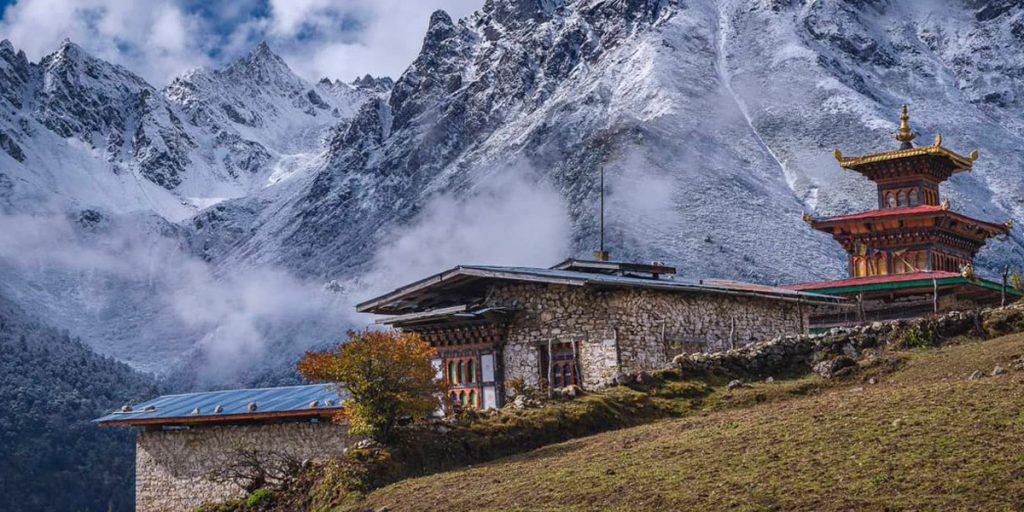
Have you ever wondered what it would be like to trek on one of Bhutan’s oldest trekking routes, retracing the steps of those who came before you 500 years ago? You no longer have to wonder because the Trans Bhutan Trail has been reopened to the public after 60 years.
This 36-day trekking route connects Bhutan’s westernmost and easternmost points, with plenty of fascinating history to discover along the way.
Discover one of the most exciting long-distance treks with Norbu Bhutan Travels and discover the history behind Trans Bhutan Trail that swirls between breathtaking sites.
Relive the 16th Century Old Trail
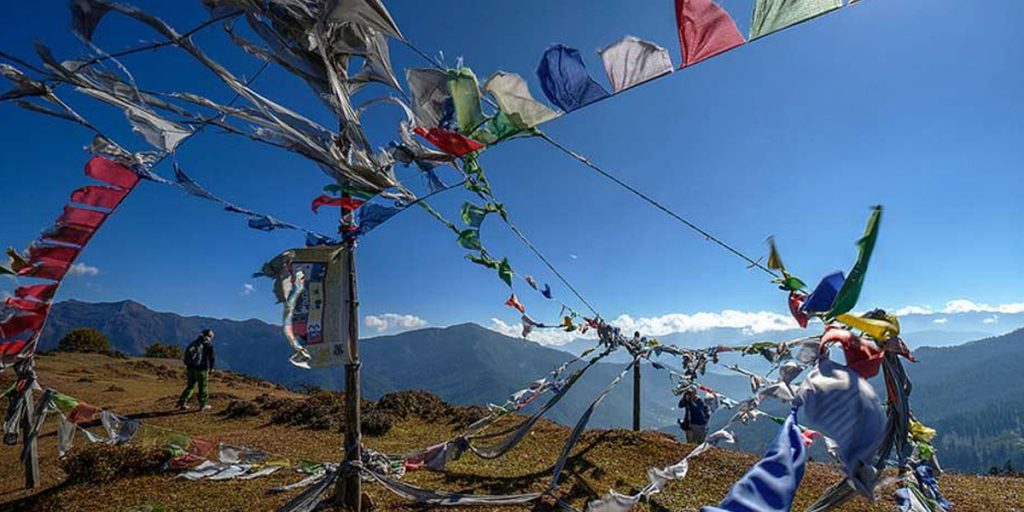
The Trans Bhutan Trail was the only possible way to traverse Bhutan’s mountain kingdom until the 1960s.
The trans trail was utilized for trade and pilgrimage, but most importantly, the path was severed as a means of communication for Bhutanese people to connect from the east to the west part of Bhutan.
Messengers known as ‘Garps’ were the forerunners of this path as they would run this trail, taking educational, royal, and religious information.
They would move from fortress to fortress, carrying these messages throughout Bhutan and supporting the country’s administration.
Most importantly, it served as a gathering point for the monarchs of the Himalayan kingdoms, who eventually came together in 1907 to form Bhutan. As a result, the Trail symbolized the country’s national unification.
Venture Along The Unexplored Trail
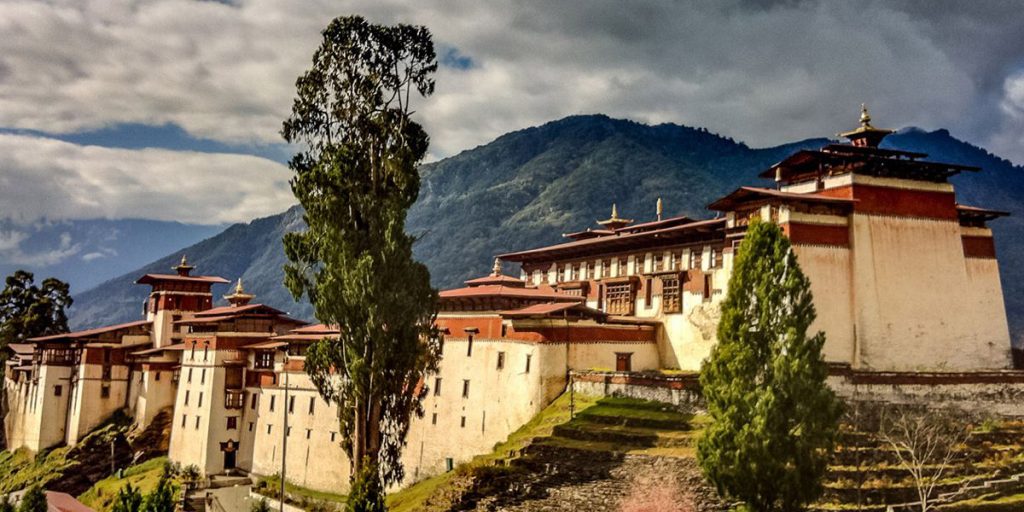
The trans Bhutan hiking trail allows you to retrace the steps of Bhutanese ancestors and rediscover generations of stories and history.
The trail also promotes the Kingdom’s important environmental and sustainable development ideals. In fact, the proceeds from this socially responsible tourism trail cover the entire cost of trail upkeep.
The trail’s natural zones range from alpine tundra to subtropical woodland, from which you will get a chance to see 200 kinds of mammals, including the one-horned rhino, red pandas, and Bhutan’s national animal, the goat-like takin.
As you travel along the trek, the trail will lead you through hidden valley meadows, thousands of bird species, and some of the world’s most endangered animals.
You will also pass by countless Dzongs, temples, ruins, and other historical and cultural landmarks, such as the greatest Trongsa fortress in Bhutan.
Trans Bhutan Trail Map

A 403-kilometer Trans Bhutan Trail spans from Haa in the west to Bumthang in the east, which is entirely untouched by tourists; the Trans Bhutan Trail is particularly significant.
The Trans Bhutan Trail is divided into 28 regions, allowing for a month-long end-to-end trip.
While trekking through Bhutan’s central, eastern, and western regions, you will discover areas of interest.
Fun Fact: If you feel exhausted during the trek, you can always swap your boots for a bike and mountain bike up the trail.
How challenging is the Trans Bhutan Trail?
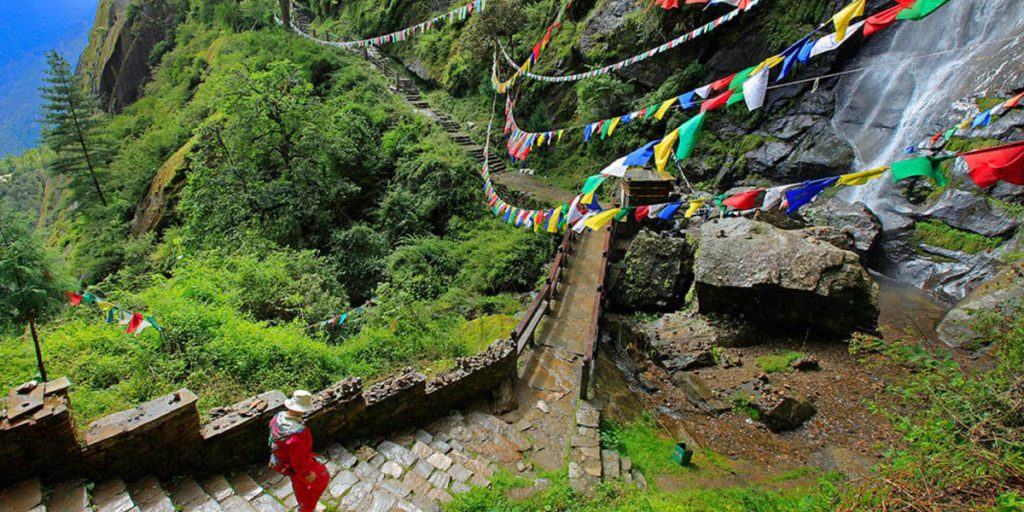
The trail’s highest point is a little under 4,000m and spans across 403km, connecting villages & towns in Bhutan.
This trail can be as challenging or as simple as you want. It takes roughly two weeks to accomplish this expedition as the route passes through almost every landscape in Bhutan.
There are isolated regions where you can trek for several days, but there are also plenty of access points from towns that allow for an aimless afternoon ramble.
You can get off the route up to five times a day, especially in the more populated west, to try different things, such as simply relaxing with a glass of peach wine and a Himalayan vista.
Discover Uncharted Bhutan With Trans Bhutan Trail
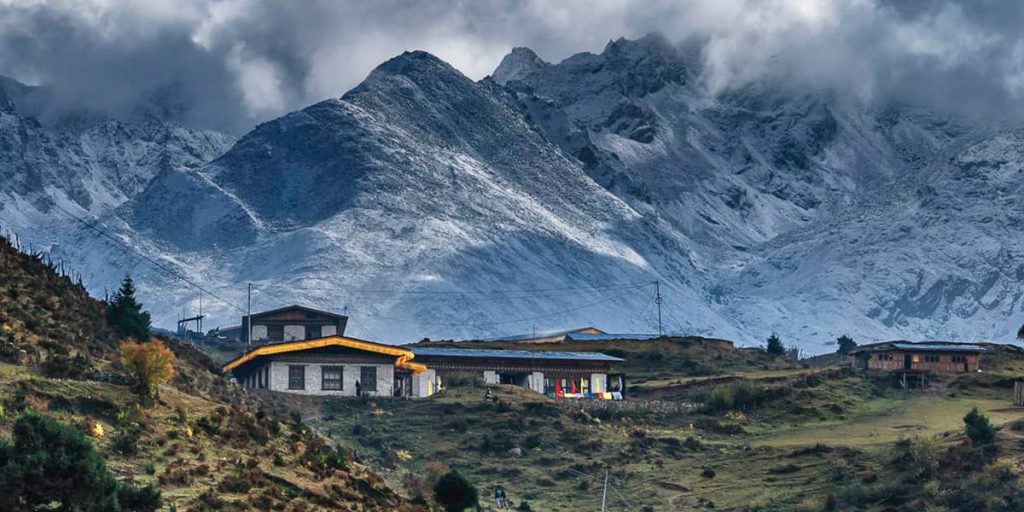
Discover central, eastern and western Bhutan on this hike as you will have the opportunity to explore historic temples, experience traditional Bhutanese culture, see village life, and retrace the famous Trans Bhutan Trail on this tour, escorted by a professional tour guide.
Here is a rundown of popular tourist destinations you will explore on your journey through Trans Bhutan Trail:
West Bhutan Trail
1. Trek from Haa to Paro (1 Day Trek)
2. Hike Through Lamgong Village to Dopsari-Paro
3. Walk to the village of Debsi – 3 km/2 miles, 1½ hours walking. (Thimphu)
4. Walk the Trans Bhutan Trail to Toeb Chandana
5. Punakha – Limukha-Chhungsakha (12 kms/4 hours Trekking)
6. Chhungsakha – Samtengang (13 kms/5 hours Trekking)
7.Samtengang – Razawo
8.Punakha-Pelela-Rukubji-Gangtey
Central Bhutan Trail
1.Chendebji – Tshangkha
2. Tshangkha-Trongsa
3. Trongsa Dzong
4. Phomdrong – Ura
5. Gayzamchu – Ura
Eastern Bhutan Trail
1. Gayzamchu – Sengor
2. Sengor – Latongla
3. Latongla – Lingmithang
4. Lingmithang- Mongar
5. Mongar – Korila
6. Korila – Sherizampa
7. Sherizampa – Drametse
8. Drametse –Gongthung
Only a few places in the world can be described as “untouched” by modernity.
The age of exploration and frontier has truly arrived, with destinations such as Antarctica and Mt. Everest now unlocked and ready to be conquered by everyday tourists.
However, a new wave of experiential travels has emerged in which travelers seek more than the bucket lists of ‘first’ and connect intimately with a location.
Such an experience seeks to engage the people, culture, environment, and relationships that a particular location has to offer.
Bhutan has become a prime travel destination, and the opening of the Trans Bhutan Trail is an attempt to incorporate the experiential while also maintaining an aura of exclusivity.
Get the taste of exclusive Bhutan on your Trans Bhutan Trail and keep up with the latest travel information before planning your Bhutan trip with Norbu Bhutan!
So, don’t hold back on your trip to Bhutan, and contact Norbu Bhutan Travels, your one-stop-shop tourism in Bhutan!



No responses yet